Over the last few decades changes in ski design such as wider skis and rocker shapes have made skiing powder easier, more fun and accessible to more of us.
Now, let’s see what this advanced skier in photos A and B can do to make skiing powder even more fun.
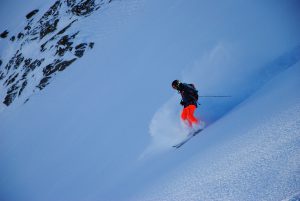
You’ll notice in photo A, the skier’s bum and shoulders are behind the feet. Although the skier is “balanced,” he’s cheating by weighting the back of his skis, making turn-initiation more difficult. >>>>>>>>>> A
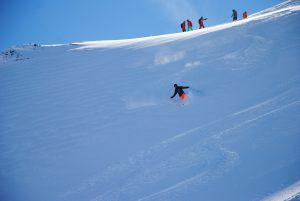
B <<<<<<<<<
In photo B, the skier’s feet and upper body point in the same direction, while the body forms a single plane inclined into the turn. He may strike an excellent Jesus pose, but the skier should instead make three fundamental adjustments in order to ski divinely:
Improve fore/aft balance. Bending the ankles, knees and hips to bring the centre of mass over his feet will improve mobility, allowing the skier to deal with the natural forces generated in skiing. A balanced skier should feel his shins touching the front of his boots. And good balance is a prerequisite for achieving the next adjustments.
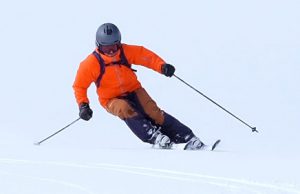
Angulation. This is a lateral bend in the hips, allowing the centre of mass to move toward the middle of the outside ski, letting the skier load and bend the ski so he can adjust turn radius to suit terrain and manage speed. It may feel like a pinch in the hip and can occur by simply reaching down the hill with the pole at the end of the turn.
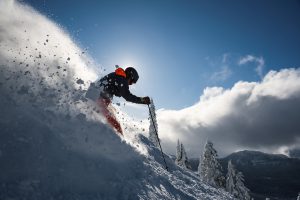
Separation. Okay, rubber time. Take a block of rubber and twist it; you’re creating torsion. Holding on with your left hand, let go with your right. Obviously, the twist will unwind so the block is aligned again.
This metaphor can be transferred to the human body. Hang from a bar by your arms, keeping the hips straight and level, while someone else twists your feet. You’ll feel that same torsion in your body. When the person holding your feet lets go, your lower body will unwind and align with your upper body. If it doesn’t, your problems are deeper than I’m qualified to comment on.
When skiing, as the turn is completed, let the lower body twist against the upper by the turning skis. As the skis flatten and release their grip on the snow at the end of the turn, the lower legs will, like the block of rubber, unwind and, as if by magic, the next turn begins.
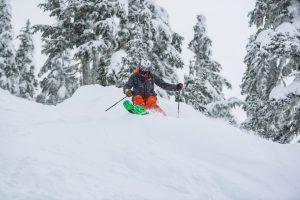
Learning to incorporate these changes requires practice, and often the guidance of a ski pro. People who feel these mechanics happen for the first time often express it as: “it’s as if the skis knew where I wanted to go,” “it feels so much more stable” and “it’s so much less physical.”
Trust me, I’m a ski instructor. If you work on this, you’ll be glad you did.



